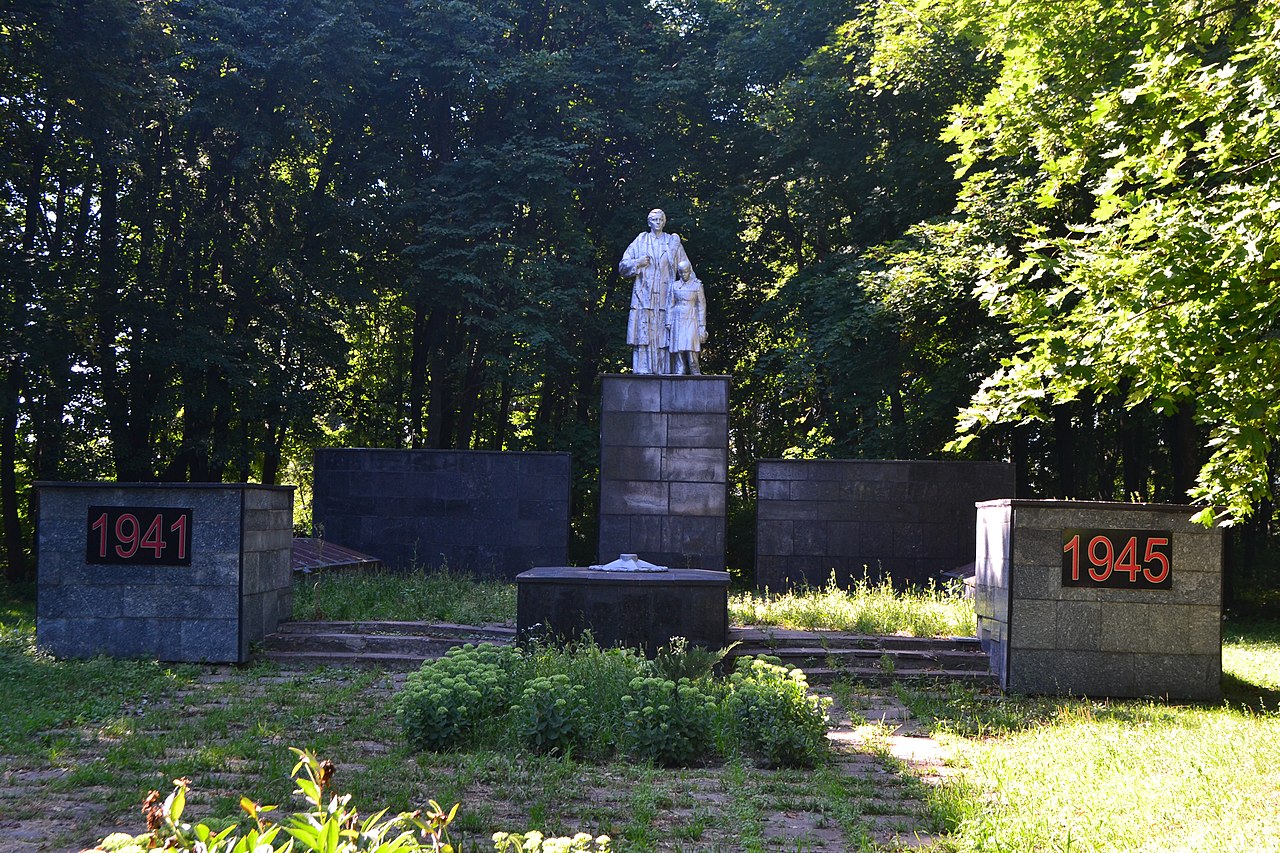- +38(0542)68-77-87
- 116, Kharkivska st., Sumy, Ukraine
- info@el.sumdu.edu.ua
The mass grave of Soviet soldiers and a monument to compatriot soldiers
Full name of the monument :
The mass grave of Soviet soldiers and a monument to compatriot soldiers
Region :
Sumy region
Address of the monument :
Romenska Str., Shtepivka village, Sumy district
Status :
Historical monument of local significance
Monument installation year (s) (if available) :
1957
Time classification according to the installation epoch :
Soviet period (1922-1991)
architects A. Klein, B. Klein
Person/event, object the monument is dedicated to :
real person(s)
Gender :
male
Social status :
intellectuals
Components of the monument :
sculptural group - 2.65 m, pedestal - 2.61 m, ceilings - 1.95 x 3.6 m, bases - 0.9 x 9.8 m
Material :
mixed materials
Type of art composition :
complex
Artistic approach :
synthesis
Main text, additional text (if available) :
Yes
memorial inscription
Language(s) of the text :
Ukrainian
Narrative commemorates :
Honoring the culture of war victims, including memorialization
The preservation state of the monument at the time of the research :
exists
Institution responsible for maintenance :
Sumy city council
Institution’s website :
Free text that contains data valid for interpretation :
174 Soviet soldiers who died during the defensive battles for the village in September - October 1941 and in the battles for its liberation from the German-Nazi invaders on September 3-4, 1943, and died of wounds between September 5 and 15, 1943 in those stationed here, are buried here. hospitals The village was liberated on September 4, 1943. The names of all the dead are known. At first, the soldiers were buried in the graves located on the street. Romenskaya and Shevchenko. In 1957, at the grave on St. Romenska installed a concrete sculptural group of a woman and a Suvorov man on a brick pedestal. In 1975, the remains of soldiers were reburied from the mass graves located on the street. Shevchenko and several individual graves. In the same year, two cemented brick steles with memorial inscriptions were installed on both sides of the sculptural group. Perpendicular to them are two concrete bases on which there are 16 cast-iron plates with the names of fallen liberating soldiers and 186 names of compatriot soldiers who died during the Second World War.

